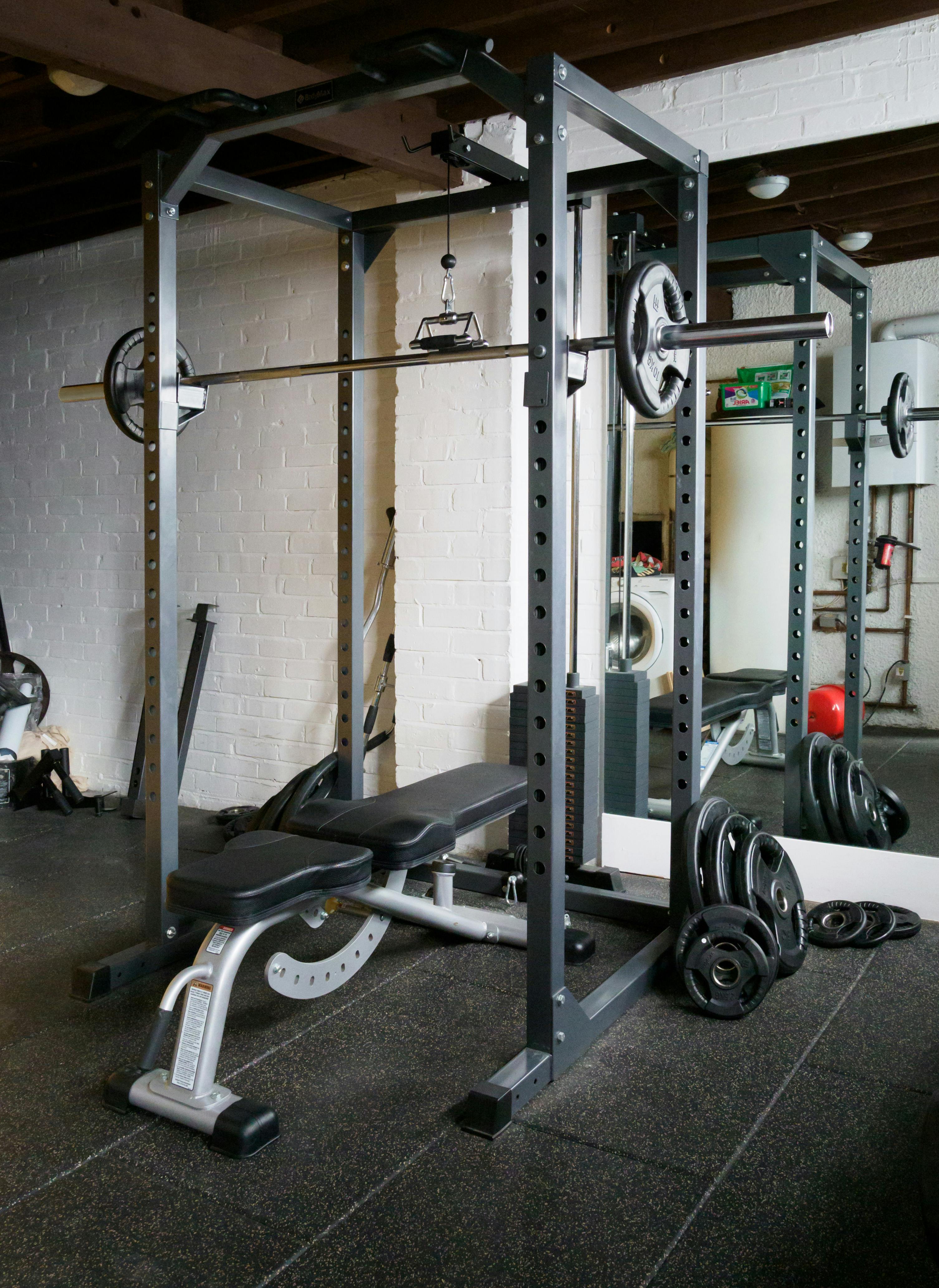Once hailed as a modern marvel for fuel efficiency and seamless acceleration, the Continuously Variable Transmission (CVT) has become both a selling point and a serious concern for SUV buyers. These transmissions promise smooth performance and better MPG numbers than traditional automatics, particularly in urban daily driving scenarios. For many, the allure of continuous power delivery without noticeable gear shifts has made CVTs an attractive option in the competitive SUV market.
However, the reality of CVT reliability is far from uniform. While some units demonstrate remarkable longevity, holding strong past the 200,000-mile mark without a hint of trouble, others buckle under even basic pressure, leading to costly repairs and nightmarish experiences at the dealership. This stark contrast makes the type of transmission lurking beneath the hood a critical consideration for those who cherish their rugged, practical, and stylish SUVs.
Manufacturers are continuously experimenting with and refining CVT designs, but the truth remains: only a select few SUVs equipped with CVTs have consistently proven their reliability. This in-depth guide aims to cut through the noise, diving deep into the transmission trenches to identify which SUV models with CVTs you can confidently rely on for a decade of ownership without transmission drama, and which ones are best avoided. Whether you’re an off-road enthusiast or a mileage-conscious commuter, understanding real-world CVT performance is the essential edge every car enthusiast and smart buyer truly needs.
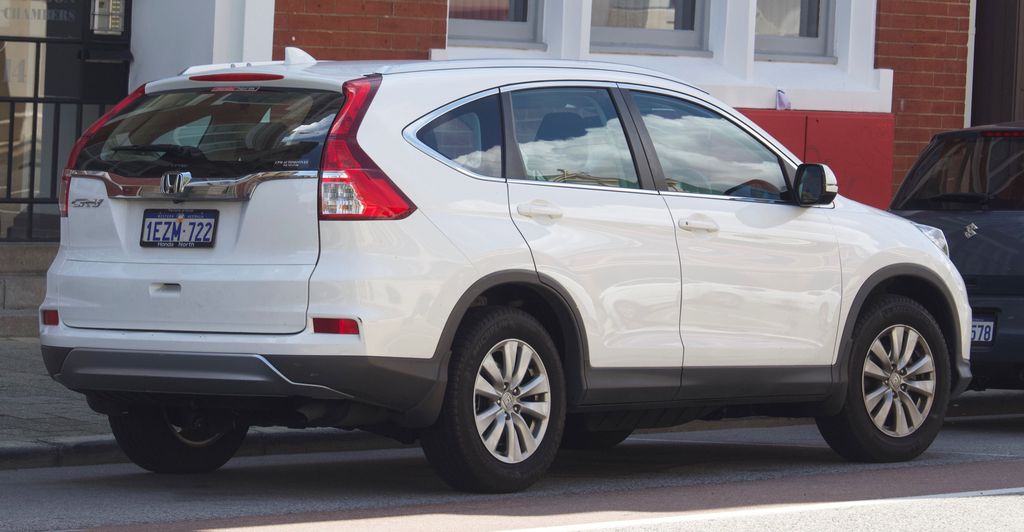
1. **Honda CR-V (2015–Present)**:
The Honda CR-V has become the poster child for reliable CVT-equipped SUVs, a testament to Honda’s engineering. Since 2015, the integration of its CVT into the CR-V lineup has been overwhelmingly positive. Owners report clocking past 200,000 miles with little more than routine fluid changes, defying the common criticisms of CVTs. There have been no widespread failures, class-action lawsuits, or viral online rants, establishing the CR-V as a dependable choice.
Honda engineered this CVT with robust durability in mind. It features smart thermal management and strong belt construction designed to resist slipping, jerking, or whining—issues infamous in less reliable CVTs. While not a performance transmission, the CR-V’s CVT capably handles daily driving and moderate hill climbs with efficiency and composure. This focus on durability ensures long-term peace of mind for owners.
The pairing of its 1.5L turbocharged engine with this refined CVT delivers smooth acceleration and top-tier fuel economy. Honda avoided overcomplicating the system with finicky tuning, opting for a straightforward, well-sorted transmission within a well-engineered SUV. For consumers seeking a dependable used SUV that won’t require a costly transmission rebuild, the CR-V stands tall. It’s a proven warrior in a market often fraught with CVT challenges, remaining one of the best-selling SUVs in the U.S. due to its unwavering reliability.
Car Model Information: 2024 Honda CR-V EX AWD
Name: Honda CR-V
Caption: 2023 Honda CR-V e:HEV
Manufacturer: Honda
Aka: Honda Breeze (China, 2019–present)
Production: 1995–present
Class: Compact crossover SUV
BodyStyle: Sport utility vehicle
Layout: Front-engine, front-wheel-drive layout,Front-engine, four-wheel-drive layout
Chassis: Unibody
Predecessor: Honda Crossroad
Successor: Honda ZR-V
Categories: 2000s cars, 2010s cars, 2020s cars, All-wheel-drive vehicles, All Wikipedia articles written in British English
Summary: The Honda CR-V (also sold as the Honda Breeze in China since 2019) is a compact crossover SUV manufactured by Japanese automaker Honda since 1995. Initial models of the CR-V were built using the same platform as the Civic.
Honda began producing the CR-V in Sayama, Japan, and Swindon, United Kingdom, for worldwide markets, adding North American manufacturing sites in East Liberty, Ohio, United States, in 2007; El Salto, Jalisco, Mexico, in late 2007 (ended in early 2017); Alliston, Ontario, Canada, in 2012; and Greensburg, Indiana, United States, in February 2017. The CR-V is also produced in Wuhan for the Chinese market by Dongfeng Honda, and also marketed as the Breeze in China for the version produced at Guangzhou by Guangqi Honda.
Honda states that “CR-V” stands for “Comfortable Runabout Vehicle,” while the term “Compact Recreational Vehicle” was used in a British car review article that was republished by Honda, associating the model name with the Sports Utility Vehicle abbreviation of SU-V.
As of 2022, the CR-V is positioned between the smaller ZR-V (marketed as HR-V in North America) — with which the CR-V shares a platform — and the larger North American market Passport/Pilot or the Chinese market Avancier/UR-V. It is currently Honda’s best-selling vehicle in the world, and the second best-selling SUV globally in 2020.
Get more information about: Honda CR-V
Buying a high-performing used car >>>
Brand: Honda Model: CR-V
Price: $32,562 Mileage: 10,918 mi.
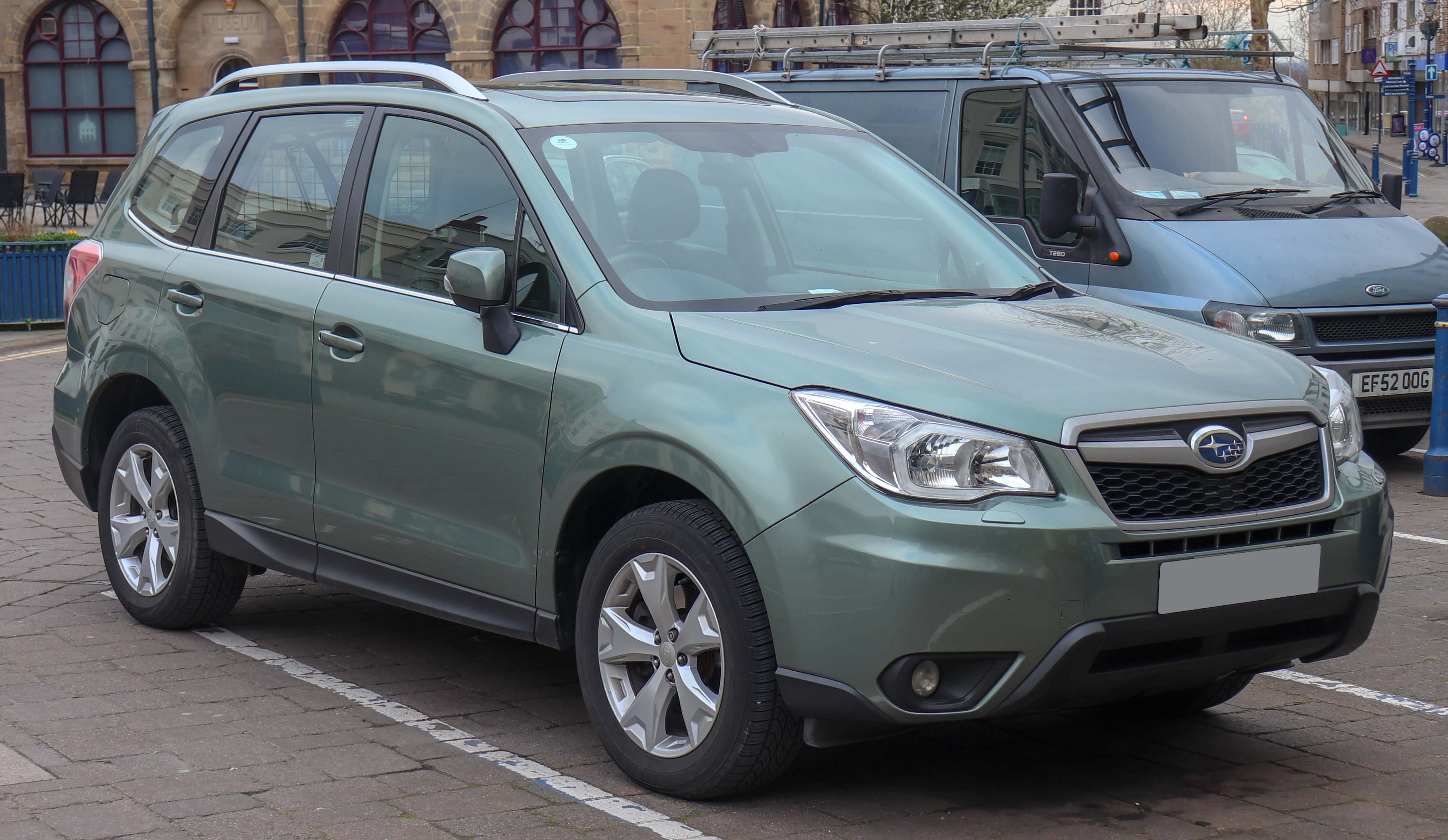
2. **Subaru Forester (2014–Present)**:
When Subaru launched its Lineartronic CVT in the Forester, skeptics were initially wary. However, this all-wheel-drive vehicle has consistently proven its resilience over the years, capably handling diverse conditions from snow and hills to mud and long commutes, all while maintaining reliable performance. Its durability under pressure has gradually won over those who doubted CVT technology.
Subaru’s CVT distinguishes itself by using a chain instead of a conventional belt. This design choice provides superior strength, allowing it to manage torque demands more effectively than typical CVTs. This robust chain-driven system, combined with Subaru’s naturally aspirated boxer engines and symmetrical all-wheel drive, creates a meticulously balanced powertrain. This synergy cleverly minimizes unnecessary stress on the transmission components, contributing significantly to its longevity.
Forester models from 2014 onward have shown excellent reliability, with many owners reporting over 150,000 trouble-free miles. To further instill confidence, Subaru has also frequently offered extended CVT warranties on numerous models. This provides an additional layer of assurance for buyers concerned about long-term performance and potential maintenance expenses, solidifying the Forester’s reputation for dependability.
Beyond its impressive powertrain, the Forester offers practical attributes like excellent visibility, solid fuel economy, and consistent year-round traction. These features combine to deliver a well-rounded SUV experience that reliably keeps drivers on the road. The Forester’s CVT operates smoothly and quietly, free from the whining, lurching, or hesitation often associated with competitors. For those seeking utility and peace of mind, the Forester is a true CVT success story.
Car Model Information: 2013 Subaru Forester 2.5X Premium
Name: Subaru Forester
Manufacturer: Subaru
Production: 1997–present
Class: Compact crossover SUV
BodyStyle: SUV
Related: Subaru Impreza
Layout: Front-engine, all-wheel drive
Predecessor: Subaru Bighorn
Categories: 2000s cars, 2010s cars, All-wheel-drive vehicles, All Wikipedia articles written in American English, All articles containing potentially dated statements
Summary: The Subaru Forester (Japanese: スバル・フォレスター, Hepburn: Subaru Foresutā) is a compact crossover SUV that has been manufactured by Subaru since 1997. The first generation was built on the platform of the Impreza in the style of a taller station wagon, a style that continued to the second generation, while the third-generation model onwards moved towards a crossover SUV design. A performance model was available for the second-generation Forester in Japan as the Forester STi.
Get more information about: Subaru Forester
Buying a high-performing used car >>>
Brand: Subaru Model: Forester
Price: $7,995 Mileage: 125,857 mi.
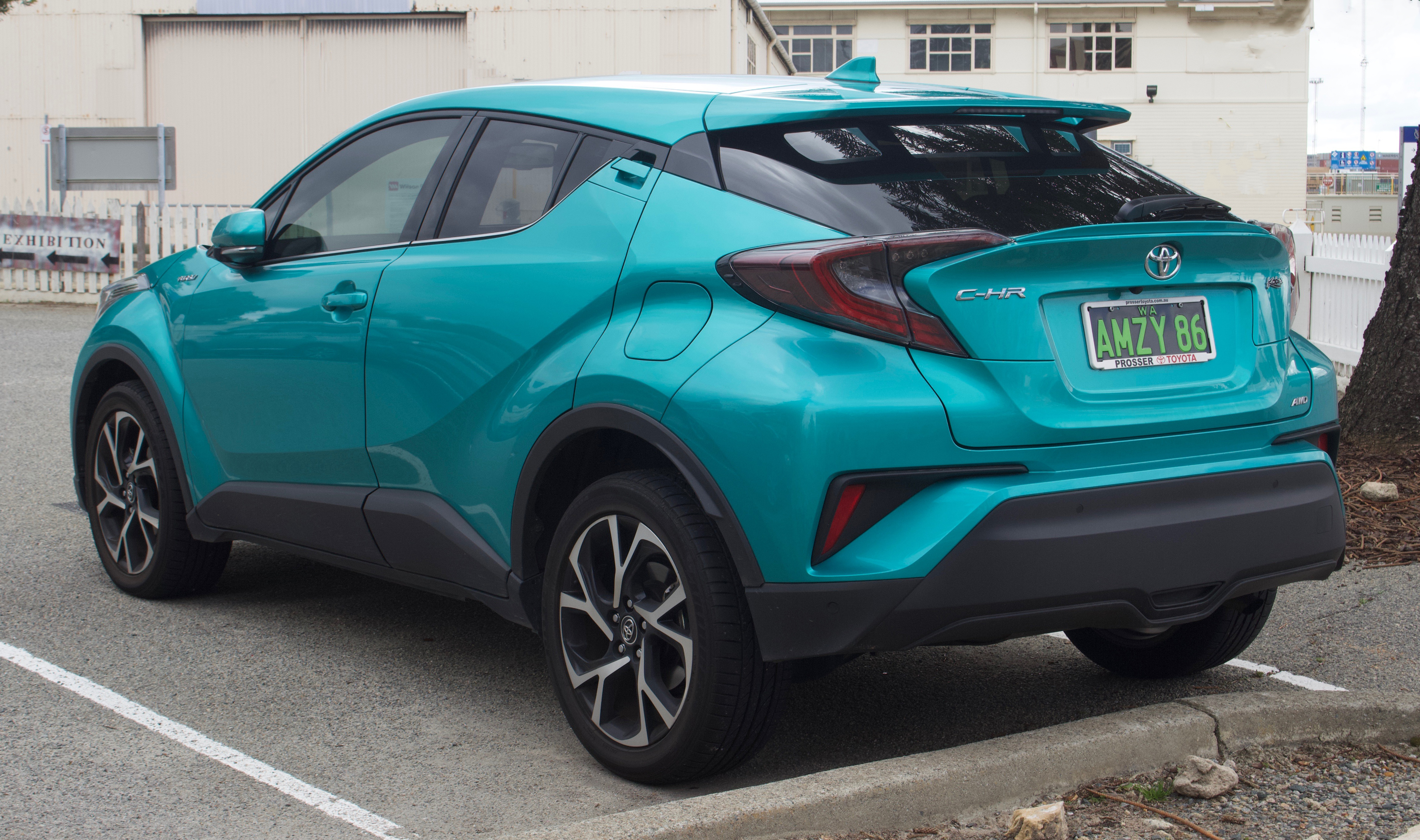
3. **Toyota C-HR (2018–2022)**:
While not the most rugged SUV on the block, the Toyota C-HR is a hidden gem when it comes to CVT durability. Beneath its aggressive styling and urban-focused design, this compact crossover features a transmission quietly building a reputation for consistency and longevity in real-world driving. Its unassuming nature belies a deeply reliable powertrain.
A key to the C-HR’s CVT resilience is Toyota’s sophisticated launch gear setup. This innovation reduces belt wear and torque strain by integrating a hybrid-style launch gear. This not only provides better off-the-line response but also evenly distributes wear across components, significantly extending the transmission’s lifespan. This thoughtful engineering approach differentiates it from many standard CVT designs.
Though the C-HR won’t win drag races, it excels in daily driving. Owners report smooth acceleration, quiet operation, and almost no transmission-related issues, even past 120,000 miles. Unlike other compact crossovers that develop early hiccups, the C-HR continues reliably with basic maintenance. If a worry-free ownership experience in a stylish package is your priority, the C-HR delivers, demonstrating Toyota’s commitment to engineering long-lasting CVT technology for discerning buyers.
Car Model Information: 2021 Toyota C-HR Nightshade Edition
Name: Toyota C-HR
Caption: Toyota C-HR 1.8 Hybrid (ZYX20, Europe)
Manufacturer: Toyota
Aka: FAW Toyota
Production: 2016–present
Class: Subcompact crossover SUV
BodyStyle: SUV
Platform: Toyota TNGA-C platform
Layout: unbulleted list
Categories: 2020s cars, ASEAN NCAP small off-road, All-wheel-drive vehicles, All Wikipedia articles written in British English, All articles with dead external links
Summary: The Toyota C-HR (Japanese: トヨタ C-HR, Hepburn: Toyota Shīeichiāru) is a subcompact crossover SUV manufactured and marketed by Japanese automaker Toyota since 2016. Since 2020, it is positioned between the Yaris Cross and Corolla Cross in Toyota’s crossover SUV range.
The first-generation C-HR was available in many regions, including Japan, China, North America, Europe, Southeast Asia, and Australasia, and was produced in four countries. Since the release of the second-generation C-HR in 2023, availability of the C-HR has been limited to Europe and Australia, with production centralised in Turkey. The Corolla Cross, released in 2020, has largely taken over the model’s positioning outside Europe.
Get more information about: Toyota C-HR
Buying a high-performing used car >>>
Brand: Toyota Model: C-HR
Price: $22,086 Mileage: 57,550 mi.
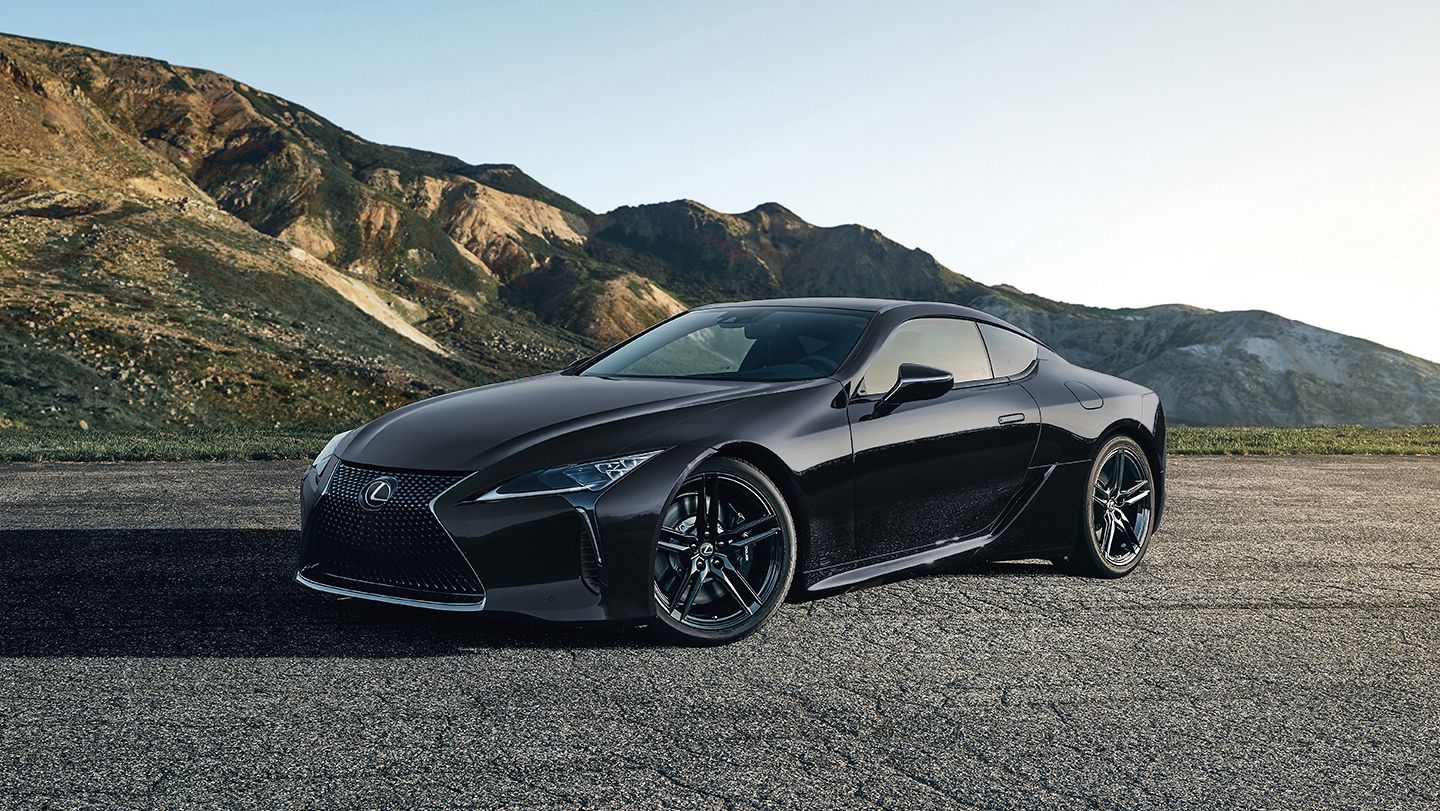
4. **Lexus UX 200 (2019–Present)**:
Luxury and CVTs rarely align, but the Lexus UX 200 is a significant exception. This premium subcompact SUV, powered by a 2.0L engine mated to Toyota’s Direct-Shift CVT, intelligently integrates a physical first gear. This setup provides robust off-the-line power before seamlessly transitioning to the belt system, resulting in smoother takeoffs, less wear, and notably increased reliability, challenging conventional perceptions.
Owners consistently praise how ‘un-CVT-like’ the transmission feels. They report minimal droning, responsive shifts, and, crucially, an absence of transmission failure stories. This adaptive system performs like a traditional automatic when power is needed, yet offers the characteristic smoothness and efficiency of a CVT for everyday driving, effectively delivering the best of both worlds without compromise.
The UX 200’s driving experience is one of remarkable versatility, capable of delivering immediate power and direct connection when demanded, while seamlessly optimizing for efficiency and a serene cabin environment. This dual-nature performance caters to a broad spectrum of driving requirements, without compromising on either power delivery or fuel economy, making it a truly versatile vehicle in its class.
As expected from Lexus, the UX 200 is replete with high-end materials and advanced technology. However, it’s the robust engineering under the hood, particularly this dependable and innovative transmission, that truly clinches its appeal. Offering excellent fuel economy, upscale comfort, and a CVT that steadfastly performs, the UX 200 is a compelling choice for those seeking peace of mind within a luxury brand. It proves that durability and performance need not be sacrificed for CVT smoothness, embodying a perfect blend of innovation and reliability.
Car Model Information: 2024 Cadillac XT5 Premium Luxury
Name: Lexus UX
Caption: 2020 Lexus UX 250h (MZAH10, Germany)
Manufacturer: Toyota
ModelCode: ZA10
Production: December 2018 – present
ModelYears: 2019–present
Assembly: Miyawaka, Fukuoka
Designer: Tetsuo Miki,
Class: Subcompact luxury crossover SUV
BodyStyle: SUV
Layout: unbulleted list
Platform: Toyota TNGA-C platform
Related: unbulleted list
Engine: unbulleted list
Motor: unbulleted list
Abbr: on (UX 300e)
Powerout: unbulleted list
Transmission: unbulleted list
Battery: unbulleted list
Drivetrain: Hybrid vehicle drivetrain#Power-split or series-parallel hybrid
ElectricRange: unbulleted list
Charging: Alternating current
Wheelbase: 2640 mm
Length: 4495 mm
Width: 1840 mm
Height: convert
Weight: unbulleted list
Categories: 2020s cars, ANCAP small off-road, All-wheel-drive vehicles, All articles with unsourced statements, Articles containing Japanese-language text
Summary: The Lexus UX (Japanese: レクサス・UX, Hepburn: Rekusasu UX) is a subcompact luxury crossover SUV from Lexus, a luxury division of Toyota. It was introduced at the March 2018 Geneva Motor Show as the smallest crossover model in Lexus’ lineup prior to the introduction of LBX in 2023; since 2024, it is currently slotted between the smaller LBX and the larger NX. It is also the first Lexus model based on the same GA-C platform as the E210 series Toyota Corolla. The “UX” name stands for “Urban Explorer”.
Prior to the 2022 facelift for the 2023 model year, the UX came equipped with Lexus Safety System+ 2.0 as standard equipment, after which the standard equipment was upgraded to Lexus Safety System+ 2.5.
Get more information about: Lexus UX
Buying a high-performing used car >>>
Brand: Lexus Model: UX 200
Price: $44,600 Mileage: 31,428 mi.

5. **Nissan Rogue (2017–Present)**:
For many automotive observers, ‘Nissan’ and ‘reliable CVT’ in the same sentence might cause a double-take. After a challenging period with early CVT designs that earned a poor reputation, Nissan made substantial investments to improve its Xtronic CVTs. By 2017, with the redesigned Rogue, these efforts paid off significantly. Newer Rogue models demonstrate vastly improved durability and performance compared to their predecessors, marking a true turnaround for the brand.
Nissan upgraded the cooling systems, reprogrammed the shift logic for smoother operation, and reinforced internal components of the Rogue’s CVT. These comprehensive enhancements are evident in owners’ experiences, with many 2017+ models effortlessly cruising past 120,000 miles with zero transmission repairs. The Rogue’s 2.5L engine also pairs well with the CVT, avoiding the high-stress situations that plagued older Nissan units and leading to greater longevity.
While spirited drivers might find its performance modest, for daily commuters, the Rogue offers a notably quiet and consistently smooth ride that reliably functions. After years of criticism, Nissan demonstrably got it right with these later iterations. If you’ve previously dismissed all CVT-equipped Rogues based on early models, it’s time to reconsider. The 2017-present Nissan Rogue represents a significant improvement, offering a level of CVT dependability that merits a fresh evaluation from prospective buyers seeking a reliable family vehicle.
The first section celebrated the engineering triumphs of SUVs equipped with reliable CVTs, showcasing models that defy common skepticism. Now, we shift gears to the other side of the spectrum, delving into the notorious cases where CVT technology has fallen short, leading to widespread issues and significant financial burdens for owners. These are the models that have, unfortunately, earned a reputation for premature failure and costly repairs, often turning an exciting purchase into a regrettable expense.
For any prospective SUV owner, especially those considering a used vehicle, understanding these pitfalls is paramount. Our objective here is to highlight which CVT-equipped SUVs have consistently suffered from catastrophic transmission failures, detailing the specific problems that have plagued them and the substantial financial implications for unsuspecting buyers. This knowledge can serve as your shield against a potential money pit.
These models serve as stark reminders that not all CVTs are created equal. While some manufacturers have invested heavily in refining their designs, others have, regrettably, brought products to market that simply couldn’t withstand the demands of real-world driving. Prepare yourself for an honest look at the SUVs that have consistently disappointed in the reliability department, saving you from a potential nightmare at the repair shop.
Car Model Information: 2018 Nissan Rogue SV
Name: Nissan Rogue
Caption: 2023 Nissan Rogue SV (US)
Manufacturer: Nissan
Aka: Nissan X-Trail
Production: 2007–present
ModelYears: 2008–present
Class: Compact crossover SUV
BodyStyle: SUV
Layout: Front-engine, front-wheel-drive layout
Predecessor: Unbulleted list
Categories: 2010s cars, All-wheel-drive vehicles, All articles lacking reliable references, Articles lacking reliable references from November 2017, Articles with short description
Summary: The Nissan Rogue is a compact crossover SUV produced by the Japanese automobile manufacturer Nissan. It made its debut in October 2007 for the 2008 model year. Beginning in 2013 for the 2014 model year, the model has been merged with the X-Trail sold outside the North American market, making them identical.
As of 2023, the Rogue was manufactured at the Nissan Smyrna Assembly Plant in Tennessee, United States and at the Nissan Motor Kyushu plant in Kanda, Fukuoka, Japan. Between August 2014 and March 2020, it was also built at the Renault Samsung Motors plant in Busan, South Korea under contract.
Get more information about: Nissan Rogue
Buying a high-performing used car >>>
Brand: Nissan Model: Rogue
Price: $16,190 Mileage: 46,305 mi.
Read more about: Free Upgrade Potential: 10 New 2024 Models Poised for Big Discounts

6. Jeep Compass (2014–2016)
The Jeep Compass, with its rugged styling, initially promised adventure, but the 2014–2016 models equipped with Continuously Variable Transmissions proved to be a significant vulnerability. Jeep’s use of a Jatco-sourced CVT, similar to units that troubled early Nissan models, unfortunately led to disastrous owner experiences marked by chronic transmission issues.
Owners during this period reported a range of problems including delayed acceleration, frequent overheating, and, in many severe cases, complete transmission failure, often before 80,000 miles. Even under light usage, the Compass’s CVT struggled, exhibiting clunky shifts, poor throttle response, and unexplained warning lights, leading to frustrating dealership visits and warranty battles.
Jeep eventually moved away from CVTs, adopting 9-speed automatics in later models, but the damage to the reputation of these early Compass models was already done. They became infamous for fragile transmissions, leading to significantly depreciated resale values and diminished customer confidence. For those seeking a budget-friendly used SUV, a CVT-equipped Compass from this generation warrants extreme caution, as initial savings can quickly be negated by costly repairs.
Car Model Information: 2024 Jeep Compass Trailhawk
Name: Jeep Compass
Caption: 2019 Jeep Compass
Manufacturer: Jeep
Production: 2006–present
ModelYears: 2007–present
Class: Compact crossover SUV
BodyStyle: SUV
Layout: Front-engine, front-wheel-drive layout
Chassis: Unibody
Categories: 2010s cars, 2020s cars, All-wheel-drive vehicles, All Wikipedia articles written in American English, Articles with short description
Summary: The Jeep Compass is a compact crossover SUV, introduced in 2006 for the 2007 model year. The first generation Compass and Patriot, its rebadged variant, were among Jeep’s first crossover SUVs. The second-generation Compass debuted in September 2016 in Brazil and at the Los Angeles International Auto Show in November 2016, sharing a modified platform with the Renegade. It is positioned between the smaller Renegade and the larger Cherokee globally or the Commander in South America. The third-generation Compass debuted in May 2025, built on the STLA Medium by Stellantis, shared with other PSA Groupe vehicles.
Get more information about: Jeep Compass
Buying a high-performing used car >>>
Brand: Jeep Model: Compass
Price: $26,990 Mileage: 29,270 mi.

7. Nissan Pathfinder (2013–2016)
The 2013–2016 Nissan Pathfinder stands as one of the most notorious examples of CVT failure in the SUV market. Designed as a family-friendly vehicle with comfort and towing capabilities, it was unfortunately paired with a weak CVT that couldn’t handle its size or torque demands, a critical flaw in its design.
This inadequacy resulted in early failures, jerky performance, and a wave of class-action lawsuits. Owners reported issues from shuddering at low speeds to catastrophic failure under normal conditions, prompting Nissan to extend warranties. The unpredictable nature of these CVTs was particularly frustrating, with some failing suddenly after 50,000 miles, others even sooner.
While Nissan improved its CVT technology in later models, this generation of Pathfinder remains a textbook case of an unsuitable transmission pairing. Despite its on-paper appeal, under the hood, this Pathfinder iteration proved to be a ticking time bomb, severely eroding trust among families relying on its dependability.
Car Model Information: 2023 Nissan Pathfinder Platinum
Name: Nissan Pathfinder
Caption: 2022 Nissan Pathfinder Platinum 4WD (R53, US)
Manufacturer: Nissan
Production: 1985–present
ModelYears: unbulleted list
Layout: unbulleted list
Class: unbulleted list
Chassis: unbulleted list
Predecessor: unbulleted list
Successor: unbulleted list
Categories: 1990s cars, 2000s cars, 2010s cars, 2020s cars, All-wheel-drive vehicles
Summary: The Nissan Pathfinder is a range of sport utility vehicles manufactured by Nissan since 1985. Until the third-generation model, the Pathfinder is based on Nissan’s compact pickup truck platform which it shares with the Navara/Frontier.
The Pathfinder was marketed as the Nissan Terrano (Japanese: 日産・テラノ, Hepburn: Nissan Terano) outside North America. Beginning in 2004, the vehicles were marketed globally as the Pathfinder.
In 2012, the R52 series Pathfinder was released as a three-row crossover SUV based on the unibody Nissan D platform, moving away from the body-on-frame chassis format. The role of a mid-size body-on-frame SUV in Nissan’s global lineup was passed to the Terra/X-Terra, which was released in 2018 and based on the D23 series Navara.
Get more information about: Nissan Pathfinder
Buying a high-performing used car >>>
Brand: Nissan Model: Pathfinder
Price: $37,755 Mileage: 46,270 mi.

8. Mitsubishi Outlander (2014–2017)
The Mitsubishi Outlander, positioned as an affordable crossover with decent features, regrettably left many owners stranded and financially burdened due to its problematic Continuously Variable Transmission. Models from 2014 to 2017, equipped with a Jatco CVT, became infamous for whining noises, overheating, sluggish acceleration, and sudden, complete failure.
A major contributor to these issues was the premature degradation of transmission fluid, often unnoticed until irreversible damage occurred. Even with routine maintenance, owners faced thousands of dollars in replacements or rebuilds, frequently before 100,000 miles.
Despite features like a capable all-wheel-drive system, the Outlander’s reputation plummeted due to these transmission woes. Mitsubishi’s software updates and extended warranties offered little comfort to many, making a low sticker price from this era a potential harbinger of significant repair costs and a purchase that demands thorough pre-inspection.
Car Model Information: 2024 Mitsubishi Outlander ES 2.5 2WD
Name: Mitsubishi Outlander
Caption: 2022 Mitsubishi Outlander SE
Manufacturer: Mitsubishi Motors
Aka: ubl
Production: 2001–present
Class: Mid-size crossover SUV
BodyStyle: Sport utility vehicle
Layout: ubl
Categories: 2010s cars, 2020s cars, All-wheel-drive vehicles, All articles containing potentially dated statements, All articles with dead external links
Summary: The Mitsubishi Outlander (Japanese: 三菱・アウトランダー, Hepburn: Mitsubishi Autorandā) is a mid-size crossover SUV manufactured by Japanese automaker Mitsubishi Motors since 2001. It was originally known as the Mitsubishi Airtrek (Japanese: 三菱・エアトレック, Hepburn: Mitsubishi Eatorekku) when it was introduced in Japan.
The original Airtrek name was chosen to “describe the vehicle’s ability to transport its passengers on adventure-packed journeys in a ‘free-as-a-bird’ manner”, and was “coined from Air and Trek to express the idea of footloose, adventure-filled motoring pleasure.” The Outlander nameplate which replaced it evoked a “feeling of journeying to distant, unexplored lands in search of adventure.”
The second generation of the vehicle was introduced in 2006 and all markets including Japan adopted the Outlander name, although production of the older version continued in parallel. It was built on the company’s GS platform, and used various engines developed by Mitsubishi, Volkswagen, and PSA Peugeot Citroën. PSA’s Citroën C-Crosser and Peugeot 4007, which were manufactured by Mitsubishi in Japan, are badge engineered versions of the second generation Outlander. Global sales achieved the 1.5 million unit milestone in October 2016, 15 years after its market launch.
As part of the third generation line-up, Mitsubishi launched in January 2013 a plug-in hybrid model called Outlander PHEV. As of January 2022, global sales totaled about 300,000 units.
The fourth-generation model was released in 2021 as a 2022 model. Following Mitsubishi’s entry to Renault–Nissan–Mitsubishi Alliance, the fourth-generation Outlander is based on the Rogue/X-Trail, which is built on the CMF-CD platform.
Get more information about: Mitsubishi Outlander
Buying a high-performing used car >>>
Brand: Mitsubishi Model: Outlander
Price: $24,961 Mileage: 26,190 mi.

9. Dodge Caliber (2007–2012)
The Dodge Caliber, an SUV-ish hatchback, was cursed with one of the worst CVTs ever put into a production vehicle. Chrysler’s partnership with Nissan led to the use of Jatco CVTs, which in the Caliber, resulted in a persistent mechanical nightmare for owners.
Drivers frequently reported belt slippage, chronic overheating, and alarming abrupt losses of power, sometimes dangerously occurring while merging onto highways. This transmission quickly gained a dismal reputation for premature failure, with many owners facing major repair bills well before 80,000 miles.
Chrysler never adequately addressed these fundamental issues, leading to a dramatic plummet in the Caliber’s resale value and widespread warnings against its purchase from mechanics. The lack of aftermarket support and expensive replacement parts only compounded the financial burden for affected owners, solidifying the Dodge Caliber as a quintessential “CVT disaster.”
Car Model Information: 2011 Dodge Caliber Mainstreet
Name: Dodge Caliber
Manufacturer: Dodge
Production: March 2006 – November 2011
ModelYears: 2007–2012
Assembly: Belvidere, Illinois,Valencia, Carabobo
Designer: Mike Nicholas (2005)
Class: Compact car
BodyStyle: hatchback
Platform: Mitsubishi GS platform
Related: Jeep Compass,Jeep Patriot,Mitsubishi ASX
Layout: Front-engine, front-wheel-drive layout
Engine: Global Engine Alliance,Global Engine Alliance,Volkswagen,Global Engine Alliance,Global Engine Alliance
Transmission: Magna International,Aisin,Getrag,Continuously variable transmission
Wheelbase: 2635 mm
Abbr: on
Order: flip
Length: 173.8 in
Width: 68.8 in
Height: {{convert,60.4,in,mm,0,abbr=on
Weight: 3052 lb
Predecessor: Dodge Neon,Dodge Neon SRT-4,Chrysler PT Cruiser
Successor: Dodge Dart (PF)
Categories: 2010s cars, All-wheel-drive vehicles, All articles needing additional references, All articles with dead external links, Articles needing additional references from July 2017
Summary: The Dodge Caliber is a compact hatchback manufactured and marketed by Chrysler’s Dodge division from the 2007 through 2012 model years, replacing the Dodge Neon and Chrysler PT Cruiser.
Following the Caliber concept, which debuted at the 2005 Geneva Motor Show, the pre-production version debuted at the 2006 North American International Auto Show, with a market launch in March 2006.
The Caliber was manufactured at the Belvidere Assembly (Illinois) plant, and across its six-year model run, just over 400,000 were produced.
Get more information about: Dodge Caliber
Buying a high-performing used car >>>
Brand: Dodge Model: Caliber
Price: $2,900 Mileage: 173,483 mi.
Read more about: The 50K-Mile Wall: 12 Used Cars That Either Crumble or Conquer After the Critical Mileage Mark
10. Nissan Juke (2011–2015)
The Nissan Juke, with its quirky styling and optional turbocharged engine, held unique potential, but its Achilles’ heel was its Continuously Variable Transmission. Models from 2011 to 2015 were fitted with Nissan’s early Xtronic CVT, a unit that consistently failed to keep pace with the Juke’s sporty aspirations and dynamic compact package.
Owners frequently complained of laggy throttle response, frustrating the driving experience, alongside widespread issues of CVT overheating and complete transmission breakdowns, often occurring prematurely before 100,000 miles. This mismatch between the engine’s potential and the transmission’s limitations led to inconsistent power delivery and substantial repair bills.
Nissan acknowledged these problems with TSBs and extended warranties, but these measures were insufficient to counteract the accumulating negative reputation. For a car marketed to young, style-conscious drivers, the constant fear of CVT failure severely undermined its appeal. The Nissan Juke from this era remains a cautionary tale: appealing styling means little if the car’s core—its transmission—is profoundly unreliable.
**Recognizing Early Warning Signs of Automatic Transmission Failure**
Beyond specific problematic models, every vehicle owner must understand the universal warning signs of automatic transmission failure. Early recognition can prevent minor repairs from becoming catastrophic replacements, which is crucial given the transmission’s complexity and cost. Understanding these signals is an indispensable skill for smart car ownership.
It’s helpful to grasp the complexity of your automatic transmission system. It comprises a torque converter, planetary gear sets, valve body, fluid system, electronic control module, sensors, and solenoids. When any part malfunctions, your vehicle will likely exhibit telltale symptoms, alerting you to an issue.
**Warning Sign #1: Unusual Noises**
One of the most immediate indicators of an automatic transmission problem is the emergence of unusual sounds. These auditory cues often signal that internal components are wearing out or failing, demanding your attention. Listen for whining or buzzing during gear changes, a clunking sound when shifting into drive or reverse, or humming/growling in neutral. Constant grinding while driving or rattling at idle are also red flags for prompt investigation.
**Warning Sign #2: Delayed or Rough Shifting**
Transmission shift quality is a critical barometer of its health; modern automatics should shift smoothly and promptly. If you experience noticeable shifting problems, it strongly indicates developing transmission issues. Common symptoms include delayed engagement when selecting a gear, harsh or jarring gear changes, hesitation between shifts, or the transmission slipping between gears. The inability to shift into certain gears is also a serious warning.
**Warning Sign #3: Transmission Fluid Issues**
Transmission fluid problems are frequently among the earliest and most critical indicators of developing failure. Regular fluid checks are powerful preventative measures. Look for burnt or dark-colored fluid (instead of bright red), a sweet or burning smell, low fluid levels, visible leaks under your vehicle, or the presence of particles and metal shavings in the fluid. These are definitive signs of distress.
**Warning Sign #4: Check Engine or Transmission Warning Lights**
Modern vehicles have sophisticated sensors to detect transmission problems early. Never ignore dashboard warning lights, particularly the “Check Engine” light or a dedicated transmission warning light, as they are critical signals. These lights can indicate transmission overheating, shift solenoid problems, speed sensor failures, electronic control issues, or dangerously low fluid pressure, all requiring prompt professional investigation.
**Warning Sign #5: Burning Smell**
A persistent burning odor is an unmistakable sign of serious transmission problems requiring immediate attention. This smell typically results from internal friction and excessive heat actively damaging components. Common causes include severely overheated transmission fluid, internal friction from worn parts, dangerously low fluid levels causing inadequate lubrication, a failed transmission cooler, or slipping clutch plates.
**Warning Sign #6: Slipping Gears**
Transmission slipping is a critical and alarming symptom requiring immediate attention. It signifies a serious internal malfunction where gears fail to maintain proper engagement, leading to power loss. You might experience sudden increases in engine RPM without vehicle speed gain, loss of power while driving, delayed accelerator response, inability to maintain speed on inclines, or unexpected neutral shifts, all necessitating urgent professional intervention.
**Warning Sign #7: Vibrations During Shifting**
Unusual vibrations specifically during gear changes are another telling sign of developing transmission problems. These vibrations, initially subtle, can escalate, providing physical manifestation of internal distress. This can include shuddering during acceleration, trembling when shifting gears, consistent vibration at certain speeds, shaking when in park, or a pulsating feeling during gear changes.
**Warning Sign #8: Engagement Problems**
Difficulty in engaging gears is a direct and unequivocal sign of impending automatic transmission failure. This points to a fundamental breakdown in the transmission’s ability to correctly select and maintain the appropriate gear. Symptoms include a pronounced delayed response when shifting from park to drive, tangible resistance when trying to engage any gear, or a distinct clunking/thudding sound when putting the car into gear. Complete failure to engage gears or inconsistent behavior are also urgent issues.
**Warning Sign #9: Loss of Power**
Transmission-related power loss is a critical symptom indicating a significant internal struggle within the transmission to effectively transfer power. This can manifest as a sudden loss of acceleration, inability to maintain highway speeds, reduced performance on hills, inconsistent power delivery, or a delayed response to throttle input. All suggest the transmission is failing to do its job and requires immediate evaluation.
**Warning Sign #10: Unusual Behavior in Neutral**
Even when your vehicle is in neutral, irregularities can signal developing transmission issues. Keep an ear out for unexpected noises (whines, hums, rattles) while in neutral, or the vehicle shaking/vibrating when stopped in this state. Difficulty shifting out of neutral, strange sounds when idling, or irregular engine RPM in neutral also suggest underlying mechanical or hydraulic malfunctions needing attention.
**How to Respond to Warning Signs**
Noticing signs of automatic transmission failure demands immediate, appropriate action to mitigate damage. First, **document the symptoms** thoroughly, noting when/how often they occur, triggers, unusual sounds, behaviors, and fluid/light status. This record is invaluable for diagnosis.
Next, **prevent further damage** by altering driving habits. Avoid aggressive driving and any activities that stress the transmission. Ensure proper fluid levels are maintained and keep transmission temperatures down. Reduce or cease towing/heavy loads, as these activities place immense strain on a compromised transmission.
**The Importance of Professional Diagnosis**
While understanding warning signs is valuable, accurate diagnosis requires professional expertise. Modern transmissions are complex, demanding specialized equipment, in-depth knowledge, and experience. Self-diagnosis or amateur advice can lead to misinterpretations and costly, incorrect repairs. Trusting qualified mechanics safeguards your vehicle’s health and financial investment.
**Conclusion: Navigating the CVT Landscape with Confidence**
Continuously Variable Transmissions are a tale of two extremes: either a blessing of smooth efficiency and longevity or a significant financial burden. The key differentiator is impeccable design and engineering. Automakers like Honda, Toyota, and Subaru have cracked the code, delivering reliable CVT-equipped SUVs that defy skepticism.
However, for every dependable CVT, a cautionary tale lurks on the used car lot. Models from Jeep, Dodge, and older Nissans exemplify how a poorly designed CVT can transform a dream ride into a financial nightmare. Transmission failure decimates resale value, erodes brand trust, and incurs steep, unexpected repair bills.
Car Model Information: 2012 Nissan Juke SV
Name: Nissan Juke
Caption: Nissan Juke (F16)
Manufacturer: Nissan
Production: 2010–present
Class: Subcompact crossover SUV
BodyStyle: Sport utility vehicle
Layout: Front-engine, front-wheel-drive layout,Front-engine, four-wheel-drive layout
Categories: 2020s cars, All-wheel-drive vehicles, All Wikipedia articles written in British English, All articles with unsourced statements, Articles containing Japanese-language text
Summary: The Nissan Juke (Japanese: 日産・ジューク, Hepburn: Nissan Jūku) is a subcompact crossover SUV (B-segment) produced by the Japanese car manufacturer Nissan since 2010. Debuted as a production vehicle at the 2010 Geneva Motor Show in March, it was introduced to North America at the 2010 New York International Auto Show to be sold for the 2011 model year as the smallest crossover in Nissan’s lineup prior to the introduction of the Nissan Magnite in 2020.
The second-generation model was revealed for the European market in September 2019, offering larger dimensions by utilising the newer Renault–Nissan CMF-B platform. The second generation marks the withdrawal of the model from most markets outside Europe and Australasia to make way for the Nissan Kicks.
The name “juke” means to “dance or change directions demonstrating agility”, and is also derived from the word “jukebox”.
Get more information about: Nissan Juke
Buying a high-performing used car >>>
Brand: Nissan Model: Juke
Price: $6,666 Mileage: 132,603 mi.
Therefore, if you’re shopping for a used SUV with a CVT, diligent homework is essential. Look beyond the spec sheet, dive into owner forums, research recalls, and avoid model years known for transmission meltdowns. Your vigilance in this research phase is your strongest defense. The difference between a smooth 200,000-mile journey and a gut-wrenching $4,000 repair could simply be the model and year you choose. Empower yourself with knowledge for peace of mind, not a path to financial ruin.



